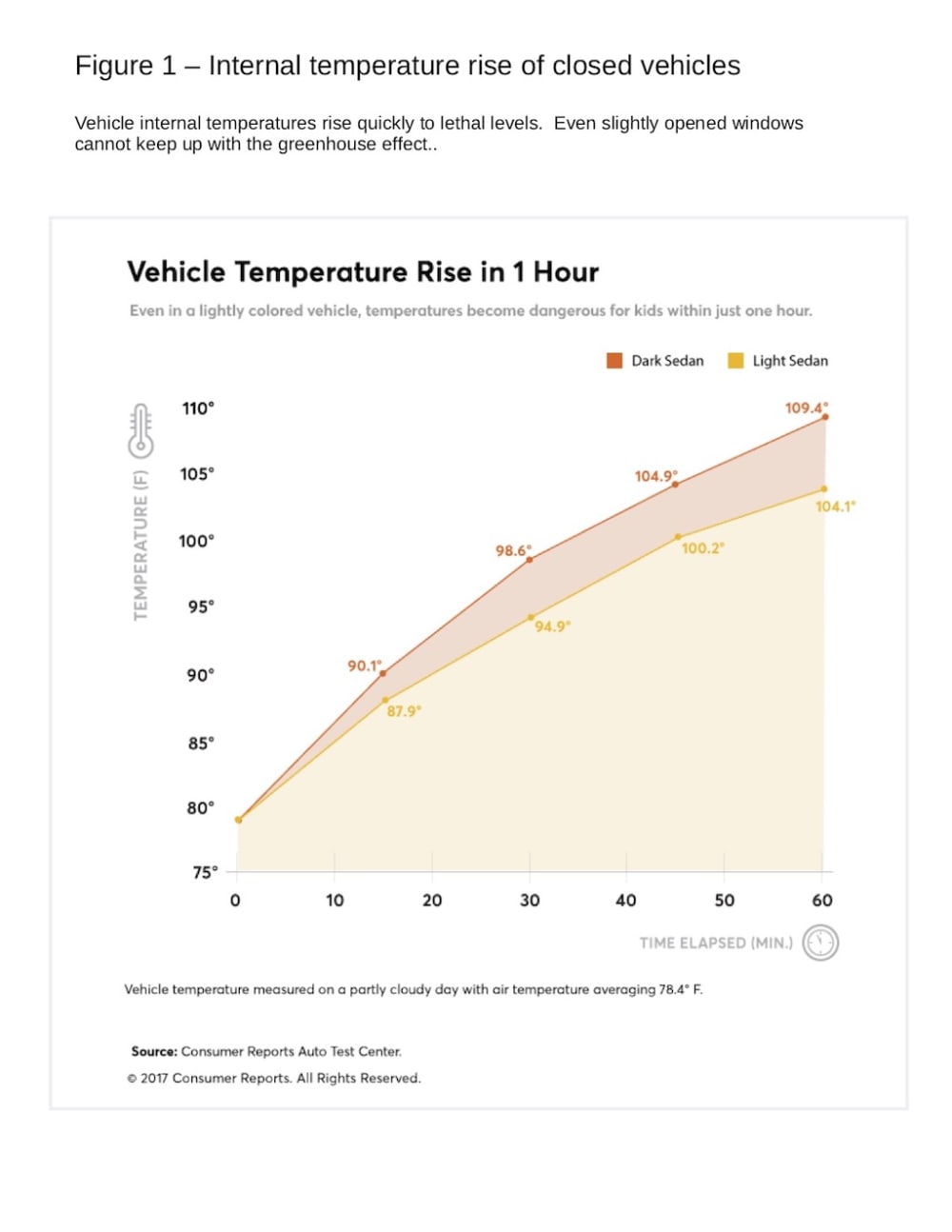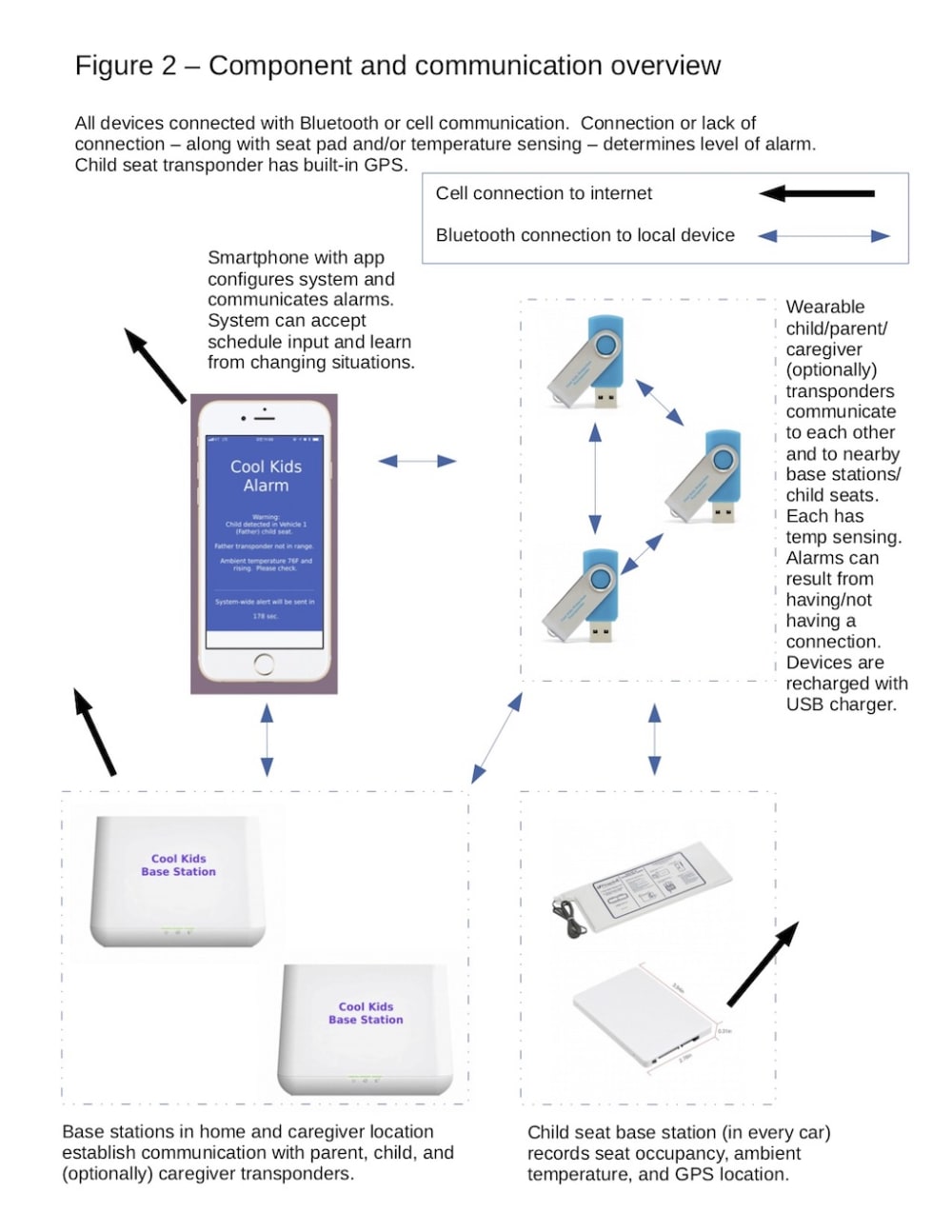The proposed system is a simple, effective means to stop children from being inadvertently left in cars. With today’s current state of inexpensive/high performance IoT devices and communication, there is no reason that a moment’s inattention should lead to a loss of life.
If a parent/caregiver makes the tragic mistake of leaving a young child in a closed vehicle, the ramifications are both severe and rapid. The greenhouse effect – even at perceptively cool temperatures – causes unsafe temperatures to be reached quickly. The temperature rise in typical closed vehicles is shown in figure 1.
The movement of very young children and their parents generally follow predictable patterns. The child is typically at home or at a day care/relative caregiver location. The means of travel is typically by car. As such, a system can be designed that exploits – and learns from – this routine.
The components of the proposed system include: a GPS-enabled child seat pressure pad/temperature sensor vehicle transponder, wearable child/parent/caregiver transponders, and home/caregiver/work base stations. Through a signal chain, the system is connected to smart phone app that resides on the phones of parents, caregivers, and other designated caring observers. Through the app, the functions of the transponders are assigned. The locations/ambient conditions of the transponders are then tracked and analyzed. The communication chain is shown in figure 2.
The child/parent transponders have long range Bluetooth communication with both the home/caregiver/work and vehicle child seat pressure pad/temperature sensor base stations. The home/caregiver/work and vehicle child seat base stations have built in cell system access. All devices directly communicate with the smartphone app.
The child/parent/caregiver transponders are charged at night and worn throughout the day. The system tracks the location and ambient conditions of throughout the day. The expected movement patterns of the child and parent can be entered through the smartphone app. Background machine learning can be employed to refine the patterns of daily movement.
The first line of defense is the child seat transponder. If the child is within range of the seat and the temperature is raising an alarm is triggered. If the child and parent are not within range, an alarm is signaled. If the transponders do not detect a successful transference from parent to caregiver, an alarm is signaled. If the seat transponder loses power indicating seat movement, an alarm is signaled. ...and, so on. The combinations of location, direct Bluetooth communication – or lack thereof – and temperature differences offer many possible ways to ascertain alarm conditions. If the parent does not respond to an alarm, system-wide alarms to others are signaled through the app, text, and/or social media.
A parent could silence alarm condition if in error. But, it is most likely that – at the first alarm – any life threatening issue would be addressed with the attention now drawn to the situation.
This system could virtually eliminate the chance of an inadvertent heat-related child death from occurring. With the state of our current technology, we owe parents that ability.
Like this entry?
-
About the Entrant
- Name:Daniel Maguire
- Type of entry:individual
- Patent status:none





